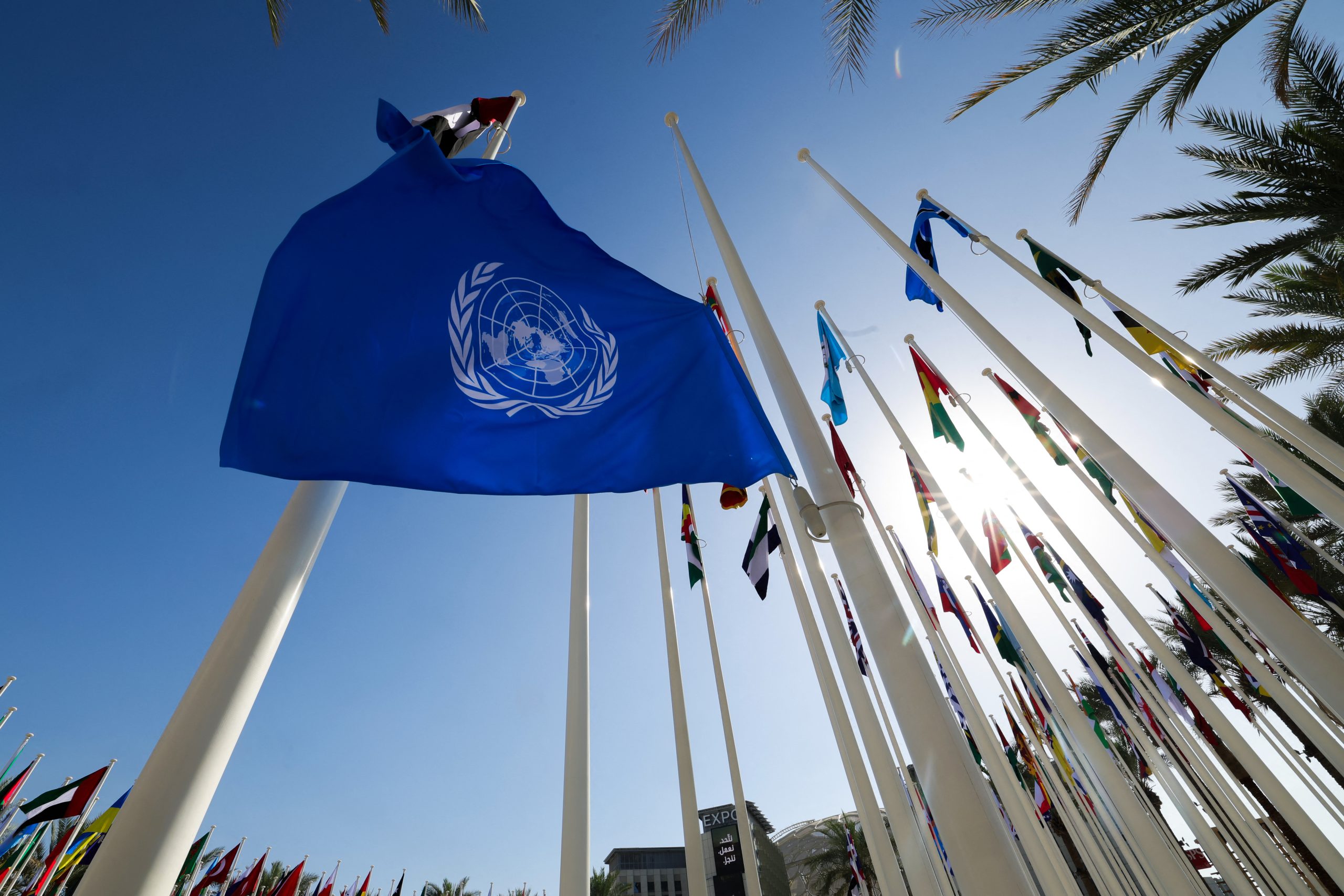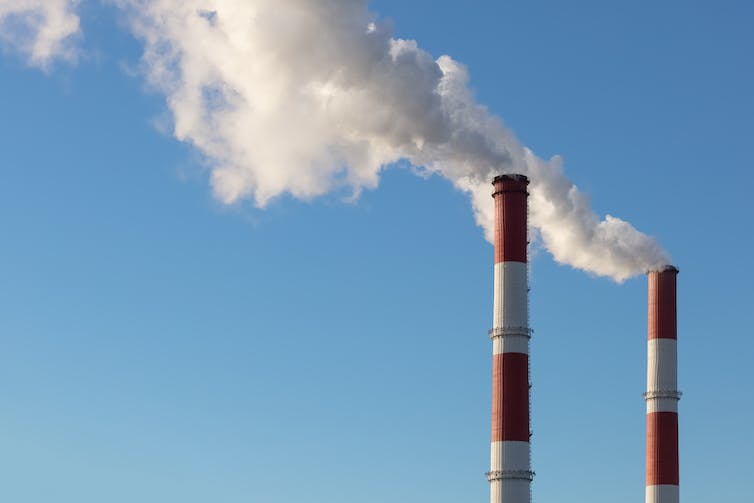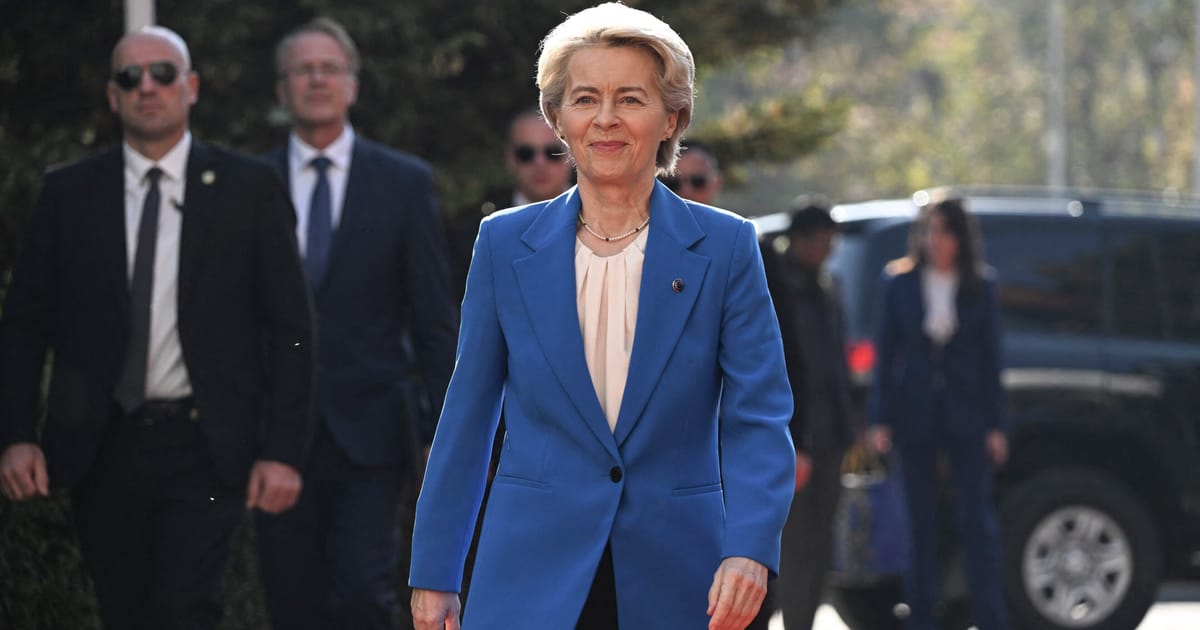Climate negotiators and diplomats won’t be the only ones crowding Expo City. The summit is also drawing royalty of various origins, chief climate officers, financiers and climate activists.
What will all these people be wrangling about — and does it have any hope of saving the planet? Let this be your guide.
The main course
At its core, the conference is about preventing the worst consequences of climate change. That means cutting greenhouse gas pollution.
Countries have made some progress since the annual talks began in 1995, but global temperatures are still on track for nearly 3 degrees Celsius of warming since pre-industrial times. That’s roughly double the most ambitious goal that nations agreed to in the 2015 Paris Agreement.
This year, dozens of countries — including fossil-fuel-dependent nations like China and the U.S. — are backing a push to triple triple renewable energy capacity and double energy efficiency.
A coalition led by the European Union and Pacific island nations wants to go further by getting global agreement to eventually end production and use of coal, oil and gas. How that language is crafted — whether a phase “out,” phase “down” or something more creative — will be one measure of headway. But these calls didn’t yield any progress at last year’s Egypt-hosted summit, and the UAE and other major polluters don’t appear on board with stronger phase-out language this time.
Failing to shift away from fossil fuels has already pushed the world past the point of preventing much of the damage from rising seas, worsening storms and spreading floods, droughts and disease. Instead, a lot of the conversation is turning to helping countries build resilience to future disasters and cope with current ones.
Last year’s summit landed an historic agreement to create a fund to help climate-ravaged countries. And just a few hours after this year’s summit, COP28, began Thursday, delegates approved the structure of that fund and countries began pledging hundreds of millions of dollars in donations. (The U.S. lagged behind at $17.5 million, while the UAE offered $100 million, a first for a high-emitting emerging economy.)
What to watch for: Sultan al-Jaber, the UAE oil chief in charge of the talks, is leading an initiative to get oil and gas companies to agree to “nearly” eliminate their emissions of methane, a potent greenhouse gas. (The Biden administration is expected to issue a final rule for its own methane crackdown during the summit.) This could produce real-world impact. But it won’t address the bulk of the industry’s climate pollution — the greenhouse gas emissions produced by burning oil and gas.
Word wars
U.N. climate conferences are full of jargon, with words like “ambition” and “landing zones” that can have big implications.
Here are a few that consistently cloud the COP lexicon:
Ambition: Maybe the word spoken most often in U.N. climate talks, this refers to how far countries will go to cut planet-warming pollution. Measures in line with Paris’ stretch goal, 1.5 degrees of warming, strike climate advocates as the right level of ambition. Anything less, they argue, is shirking.
Paris goals: The Paris Agreement that 196 countries agreed to in 2015 is core to everything the U.N. climate process aims to achieve. The pact called for taking steps to limit global temperature rise to “well below” 2 degrees Celsius, and to “pursue efforts” to cap it at 1.5 degrees. To hit the 1.5 target during this century, scientists estimate, global greenhouse gas emissions must peak before 2025 and decline 43 percent by 2030 — a milestone the world is way off track to achieve. Then they need to reach net zero by around 2050.
Adaptation: This can mean many things: flood defenses, drought-resistant crops, or redesigning buildings to handle higher temperatures. All that costs money, and poorer countries — usually the ones experiencing the worst damage — need the most help.
Loss and damage: This was the subject of the most acrimonious fights heading into Dubai. Simply put, low-lying island nations and other vulnerable countries face damage they can’t adapt to, such as the loss of roads, homes and crops or the wiping out of their cultural heritage. Many of these communities want the industrialized nations that have contributed the most to the problem to provide money to help poorer countries recover. But wealthy nations, the U.S. in particular, have long resisted the implication that they’re legally liable or paying reparations.
Phase out vs. phase down: The 2021 summit in Glasgow, Scotland, hit a dramatic moment when countries led by India (and backed by China) watered down the final text’s coal “phase-out” to a “phase-down.” That basically means reducing use of coal, as opposed to ending it. This language isn’t legally binding, but it sends important signals to governments and investors — and this time, we’re expecting a similar debate on the future of all fossil fuels.
Carbon removal: In short, getting carbon dioxide out of the atmosphere. That can be done through natural processes, such as restoring and protecting forests. Or it can mean technology that filters carbon from the air or oceans, so it can be stored underground, under the seabed or in products like concrete. That technology hasn’t yet been rolled out on a large scale, but it’s one possible way to limit warming beyond what switching to greener energy can achieve.
Unabated: This word turns up a lot in remarks by U.S. climate envoy John Kerry, and in position papers by the likes of the G7 — and it points at one of the central tensions of the climate debate. Phasing out “unabated” fossil fuels means ending their use at facilities that don’t have the technology to capture and minimize their carbon pollution. But climate activists, and advocates for vulnerable nations, fear that petro-states like the UAE will seize on this language to keep producing fossil fuels at current levels, even though experts say carbon capture at that scale is unrealistic.
NDCs: These “nationally determined contributions” are the nonbinding 10-year pledges that countries agreed to in Paris to indicate what they’re doing to limit global warming. Every 10 years, they’re expected to make those pledges stronger. The next round of targets comes in 2025, which makes this year’s talks all the more important — countries will start crafting their new NDCs once the summit in Dubai closes.
Global stocktake. The Paris Agreement included a provision that countries should produce a progress report on the text’s big goals. That report was referred to as a global stocktake — and the first one was produced earlier this year. Its conclusion: We’re way off track. The COP28 agreement will be — effectively — the political response to that grim observation. Do countries care? Will they step up the pace?
The tensions
U.S. vs. China: Frosty relations between China and the U.S. seem to have thawed, at least where climate is concerned. That could be good for negotiations on issues such as methane, and gives countries that have resisted moving first fewer excuses to delay, said Rachel Kyte, a longtime climate adviser.
But it’s unlikely that international engagement will push China to agree to much more action to curb coal, a bedrock of its economic and energy security. And broader bilateral tensions over trade and industrial policy — both increasingly intertwined with climate — are likely to be on display in Dubai.
Green zone, blue zone: The sprawling, futuristic complex on the outskirts of Dubai that was built for Expo 2020 is divided into “blue” and “green” zones. The blue zone is the site of formal negotiations, a place for diplomats and their advisers to convene. Only people with U.N. accreditation — including media and civil society observers — can access that venue. The green zone is open to the public and has frequently been described as a “trade show.” This year, it will include booths from businesses, thematic hubs and “socially responsible” food and beverage outlets.
With record attendance expected, the corporate presence is expected to be high, but it has also stirred criticism, including from U.S. and European lawmakers. In a letter dated Nov. 22, they urged the summit organizers to adopt rules that would limit potential influence from the fossil fuel industry.
The setup
Talks officially began Thursday with the formal acceptance of the agenda, which sailed through without a battle, marking a positive start. Two days of speeches from country leaders will follow Friday and Saturday. More than 130 heads of state and government will deliver remarks, starting with the UAE’s Sheikh Mohamed bin Zayed Al Nahyan. Several notable leaders will be absent: Chinese President Xi Jinping, Russian President Vladimir Putin and U.S. President Joe Biden.
Vice President Kamala Harris will travel in Biden’s place, the White House confirmed on Wednesday. She’ll be joined by senior officials from more than 20 U.S. departments and agencies, including special climate envoy John Kerry, national climate adviser Ali Zaidi and senior adviser John Podesta.
For some observers, leaders’ attendance matters less than what they bring to the table.
“It’s not as much ‘President Biden, are you coming’ as it is ‘President Biden, what are you ready to do?’” said David Waskow, director of international climate at the World Resources Institute.
A bipartisan U.S. House delegation led by Energy and Commerce Chair Cathy McMorris Rodgers (R-Wash.) and top committee Democrat Frank Pallone of New Jersey will also make an appearance.
Republicans say they see the talks as an opportunity to showcase how the U.S. is addressing energy and environmental issues. It’s also a way to secure America’s future “against adversaries like China,” McMorris Rodgers’ spokesperson Sean Kelly said in a statement to POLITICO’s E&E News earlier this month.
Congressional dynamics have proven problematic when it comes to securing money to help fund climate action in developing countries. The U.S. has consistently struggled to get budgetary approval that would help meet Biden’s $11.4 billion pledge by 2024.
“We still have folks in leadership positions in the House Republican Party that are not only trying to slow down the pace of climate action, but deny it and reverse course,” a senior administration official told reporters on Wednesday, speaking anonymously as a condition of the call.
How U.S. lawmakers navigate the talks, and what they aim to accomplish, will be worth watching.
It will be McMorris Rodgers’ first trip to any COP gathering — as it will for two other House Republicans whose attendance has been confirmed: Energy, Manufacturing and Critical Minerals Subcommittee Chair Bill Johnson of Ohio and Energy, Climate and Grid Security Subcommittee Chair Jeff Duncan of South Carolina.
But veteran Rep. John Curtis (R-Utah), chair of the House Conservative Climate Caucus, will be attending his third U.N. climate summit.
Sen. Sheldon Whitehouse (D-R.I.) also plans to attend. He has been pushing a carbon border tax to rival one the European Union is rolling out.
“That to me is the most positive thing on the horizon really in terms of actually reducing emissions,” Whitehouse told POLITICO. “And to the extent that America can step up to match it — and perhaps be joined by the U.K., Australia, Japan, Canada — you can put together a really powerful consortium that solves an enormous part of the climate problem.”
What will come from all this?
One big question mark surrounds the global stocktake — how countries respond to the report card showing they’re not living up to their pledges to cut pollution. This sets countries up to craft their next round of climate targets, which would need to aim for even deeper cuts.
Those new pledges will start from 2025. So this conference is effectively a stepping stone toward COP30, which is expected to take place in Brazil — possibly the Amazon.
On a positive note, one major potential battleground was settled in the opening session: the adoption of a fund for climate-ravaged countries.
“This is going to be a different COP, with a different presidency, very much centered around action and implementation,” said al-Jaber, the summit’s president, calling the agreement “unprecedented” and “historic.”
“Getting this done and over the line is a clear demonstration of how committed we are,” he said. “When we commit, we deliver and that is going to be the DNA of COP28.”
The focus of the talks now shifts to getting countries to take on the much harder task of agreeing to a fossil fuel exit.
What to watch for: Whether other non-traditional donors will contribute to the fund for loss and damage. Several countries announced early contributions to the fund Thursday, including the UAE. That could put pressure on other wealthy Gulf nations and emerging ones, such as China, to pony up.
Pledging will continue over the next two days at the leaders’ summit. As of Thursday evening in Dubai, total donations came to more than $400 million.
The U.S. and EU have also argued for a stronger role for the private sector and “innovative” sources, perhaps taxes on aviation or international shipping.
Suzanne Lynch in Dubai and Emma Dumain in Washington, D.C., contributed to this report.




